Now located at the world-class Murieta Equestrian Center, the Western States Horse Expo offers you a unique experience that even the pickiest of horse owners will embrace. Bring your show horses, breeding stallions or latest foal crop and introduce them to tens of thousands of horse owners from all over the world while driving up exposure for your breeders and show managers! Stop singing to the choir and meet individuals who are eager to learn about the variety of breed options available to them.
The Horse Expo Breed Pavilion consists of 120 permanent, matted and shaded stalls, located just steps away from the main exhibit halls and concession area. Do you have awesome branded banners or drapes you want to show off? Upgrade your location to include a Stall End and ensure you receive the best exposure!
As an attendee, you can learn more about your favorite breed directly from the associations or fall in love with a new breed and see them in action as they demonstrate their athletic ability, trainable minds and diverse natures. Take a stroll through the Breed Barns and meet the horses and the people that love and care for them. See the slider below to discover the breeds who will be participating in this year’s program!
Breed organizations, want to participate a breed demonstration? Fill out our online Breed Demonstration Application or email [email protected] today!
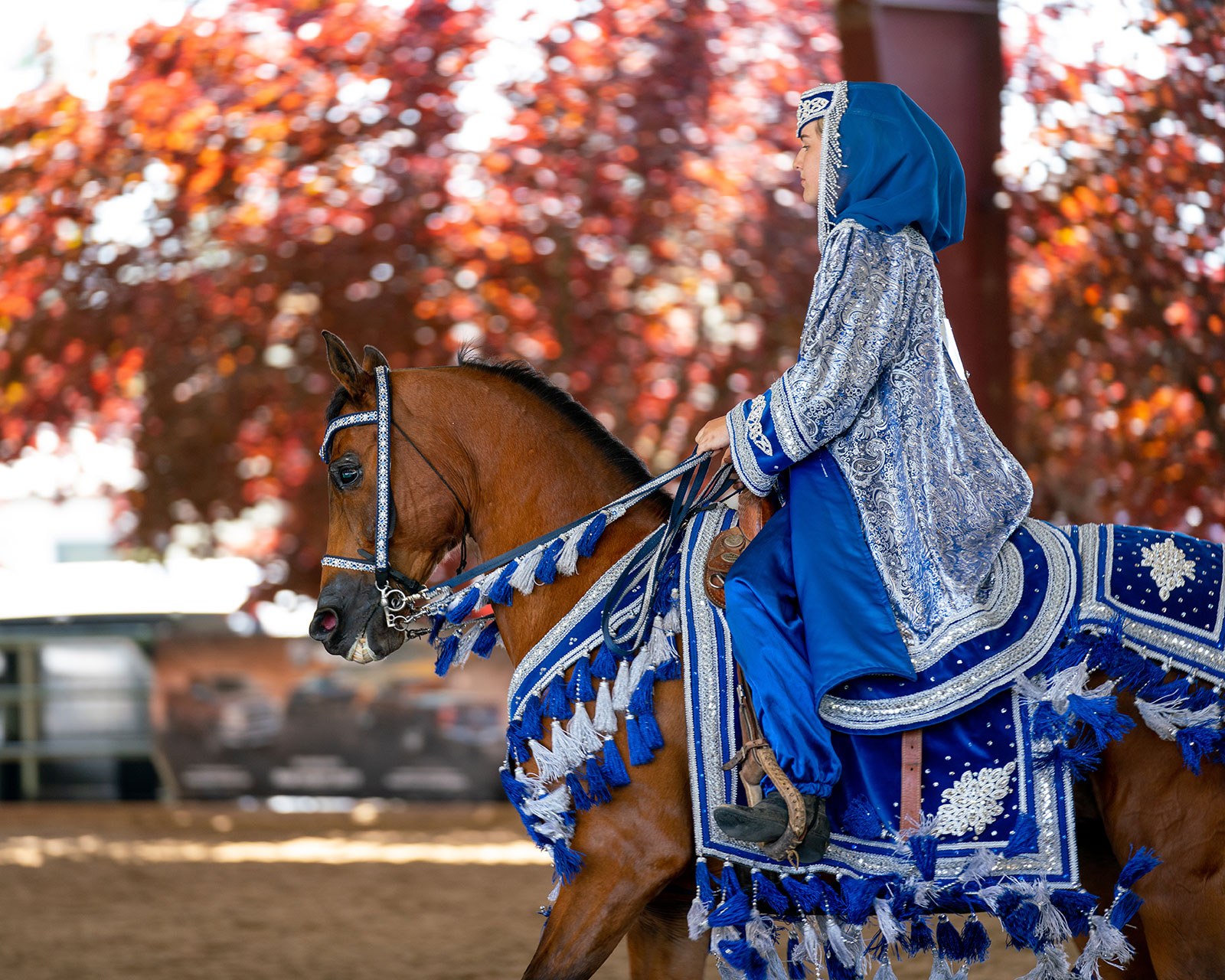

The Arabian originated on the Arabian Peninsula. With a distinctive head shape and high tail carriage, the Arabian is one of the most easily recognizable horse breeds in the world. It is also one of the oldest breeds, with archaeological evidence of horses in the Middle East that resemble modern Arabians dating back 4,500 years. Throughout history, Arabian horses have spread around the world by both war and trade, used to improve other breeds by adding speed, refinement, endurance, and strong bone. Today, Arabian bloodlines are found in almost every modern breed of riding horse.
The Arabian developed in a desert climate and was prized by the nomadic Bedouin people, often being brought inside the family tent for shelter and protection from theft. Selective breeding for traits including an ability to form a cooperative relationship with humans created a horse breed that is good-natured, quick to learn, and willing to please. The Arabian also developed the high spirit and alertness needed in a horse used for raiding and war. This combination of willingness and sensitivity requires modern Arabian horse owners to handle their horses with competence and respect.
The Arabian is a versatile breed. Arabians dominate the discipline of endurance riding, and compete today in many other fields of equestrian activity. They are one of the top ten most popular horse breeds in the world. They are now found worldwide, including the United States and Canada, United Kingdom, Australia, continental Europe, South America (especially Brazil), and their land of origin, the Middle East.


Barock Pinto horses are a relatively young horse breed originating from Friesland. This extraordinary breed – the beauty of which was also admired outside of the Netherlands – was created by crossbreeding Friesian mares with dappled Old Gelderland horses in the 1950s. The Barock Pinto horse breed goes back to a stallion named Bonte Nico, who was known for his striking dappled pattern. The word “pinto” contained in the name means “painted, dappled” in Spanish and refers to the breed’s most important feature: the beautiful horses’ black and white pattern. All horses from the Pinto family must meet certain requirements regarding their coat to be recognized as such. If a horse only has a single spot that differs from the coat’s foundation color, proof of this area measuring at least 500 cm² is required. Horses with purely black coats can also be included in the breeding register. For this, they need to have at least two areas of white with a diameter of at least ten centimeters.
The beautiful, dappled warm-blooded horses that are commonly referred to as “colorful Friesian horses”, look similar to other Friesian horses. The term “Barock” (baroque) refers to the horses’ baroque physique. They have a square body shape that is typical for baroque horses and an elegant head with small ears and beautiful big eyes. They are also distinguished by their strong neck, a wide chest, and well-developed muscles on the hindquarters. The horses are black and white with an overo (white-over-dark) or tobiano (white-haired, pink-skinned patches on a base coat color) pattern. Barock Pinto horses typically also have a long tail, a lush mane and extensive feathering.
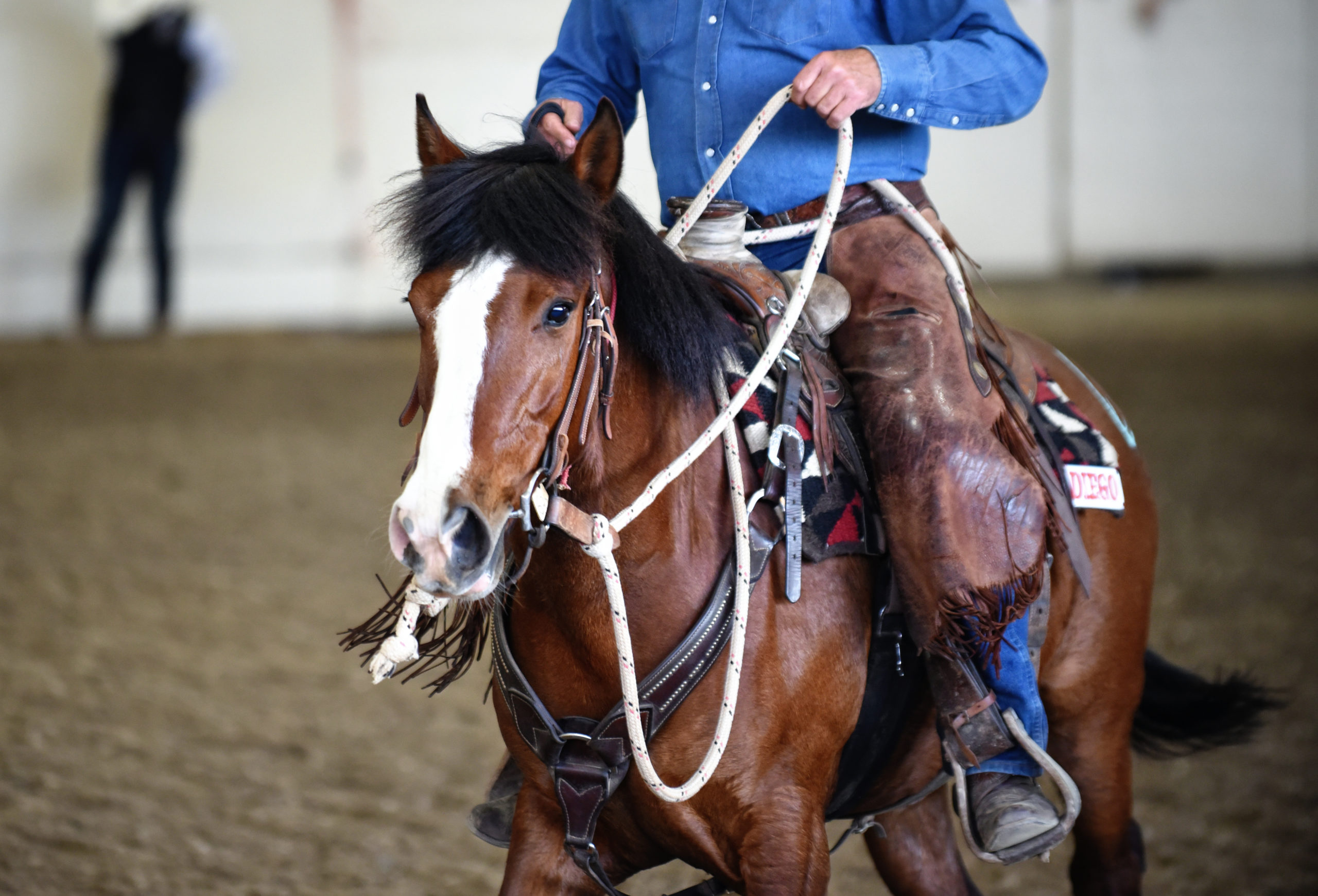

The mustang is a free-roaming horse of the American west that first descended from horses brought to the Americas by the Spanish. Mustangs are often referred to as wild horses, but because they are descended from once-domesticated horses, they are properly defined as feral horses. The original mustangs were Colonial Spanish horses, but many other breeds and types of horses contributed to the modern mustang, resulting in varying phenotypes. Most contain a greater genetic mixture of ranch stock and more recent breed releases, while a few are relatively unchanged from the original Iberian stock, most strongly represented in the most isolated populations.
They are bred by Mother Nature to survive in a tough desert environment. Strong, intelligent, with good bone, and very hardy, wild horses can be trained to do anything their domestic cousins do. Wild burros are gentled and often trained for livestock guardians, riding, packing, and driving. These lovable animals make wonderful companions for horses.
In 1971, the United States Congress recognized wild horses and burros as living symbols of the historic and pioneer spirit of the West, which continue to contribute to the diversity of life forms within the Nation and enrich the lives of the American people.


The story of the Canadian Horse began in 1665 when King Louis XIV sent the first three shipments of horses from his royal stables of Breton and Norman ancestry to aid in settling the colonies of New France, now Quebec.
The Canadian Horse may have had royal blood, but they quickly became a horse of the people. With their compact, muscular bodies, thick winter coats, and rock-hard feet, they could outwork much bigger horses. They could pull a sleigh up to 80 miles in a day – and live on “almost anything – or almost nothing.” They were used for everything from farm work, to transport, to riding and racing. It was said that they could excel at any task they were put to. This legendary toughness earned them the nickname le petit cheval de fer: the “Little Iron Horse.” Thriving in the Canadian landscape, they were elegant, dashing, brave, strong, and rugged enough to survive in the most challenging environments.
But it is the Canadian Horse’s temperament that makes him truly special. The breed standard says that the Canadian Horse should be ‘of docile temperament, but full of vigor and spirit without being nervous.’ It is this intelligence, work ethic, and kind, calm nature that rounds out the truly admirable qualities of this exemplary breed.
Americans discovered the Canadian Horse in the 1700s, coming down through the East Coast before making their way west on the Oregon and California Trails. They were used extensively as carriage and stagecoach horses, pack and draft animals, and gained fame as trotters and pacers as the sport of harness racing, which originated on Canada’s frozen lakes, gained popularity. They were also used for crossbreeding in the United States, contributing to the Morgan, Standardbred, and many American gaited breeds.
The Canadian Horse became so popular throughout the 1800s, that thousands were exported from Canada to the United States, with many of them becoming cavalry horses for riding and pulling heavy cannons during the Civil War. So many horses were lost that by 1880 the breed was nearly extinct. By 1976, fewer than 400 horses remained. Since then, various organizations have worked to preserve the Little Iron Horse and have been successful at promoting the breed as a family horse and national treasure all across Canada. There are now an estimated 2,000 alive today, with various organizations working to keep that number growing to save the Canadian from its current “at risk” status. The breed excels at jumping, upper level dressage, working equitation, and endurance events.
Demonstration presented by Canadian Horse United. In association with Raindance Canadian Horse of Oregon and California Canadians of Northern California.
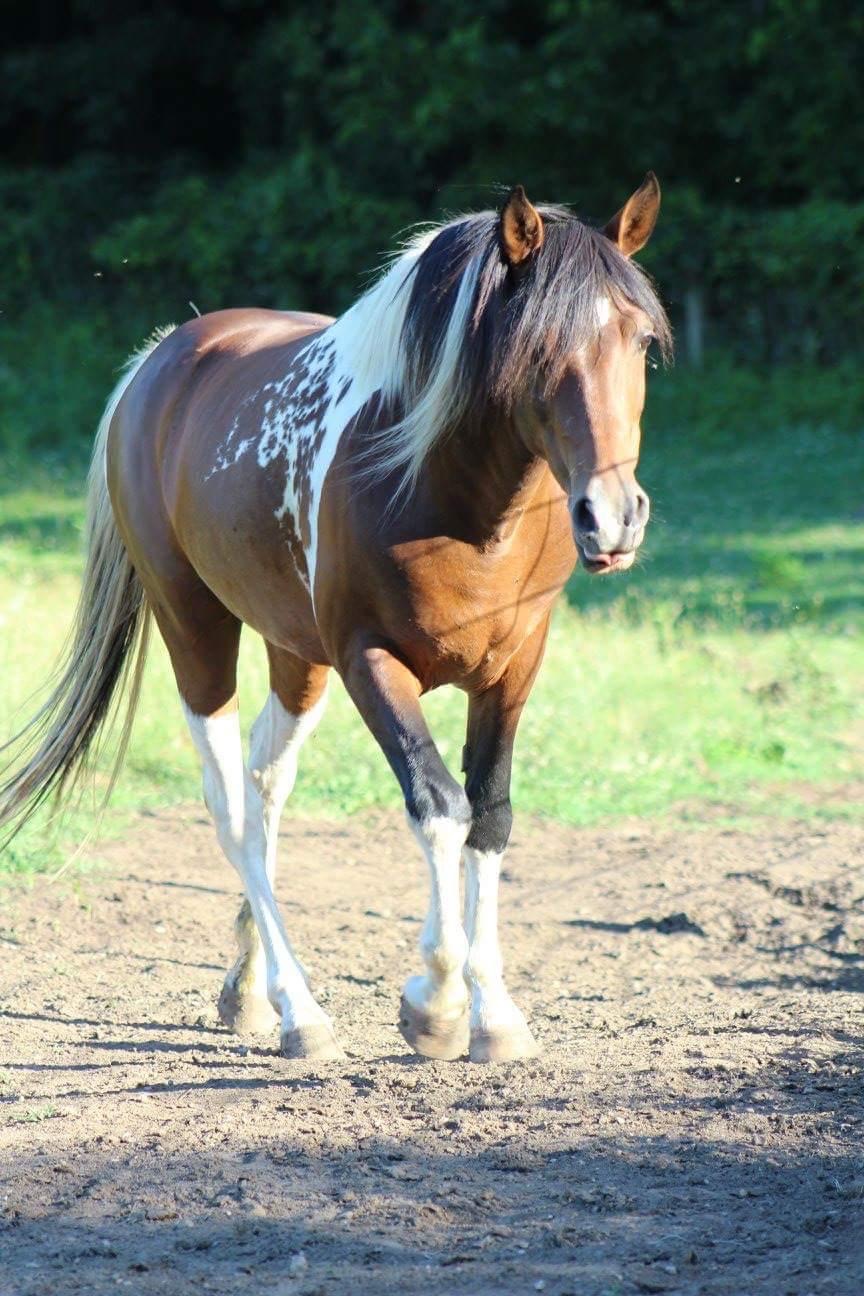

Chincoteague Ponies are a breed of wild ponies that live on Assateague Island off the coast of Virginia. The herd of wild ponies are owned by the Chincoteague Fire Department and consist of less than 150 ponies that live in different herds or bands across the island. Most Chincoteague Ponies are between 13 and 14 hands but they can range from 12 hands up to just over 15 hands. Chincoteague Ponies come in a variety of colors and pinto patterns but the breed does not have grey or dun. Marguerite Henry brought attention to the breed with her book Misty of Chincoteague.
Chincoteague ponies are fun to ride, easy to train and can excel in any discipline. They are great mounts for both children and adults. Chincoteague ponies are smart, hardworking and enjoy being with people. The Chincoteague Pony is a rare breed and are said to be descendants of Spanish horses from shipwrecks off the coast in the 16th century.
Island Pony Dream Farm in Parma, Idaho raises Chincoteague Ponies and has a herd of 19 Chincoteague ponies including island born ponies and Misty descendants.


The Clydesdale is a Scottish breed of draft horse. It is named for its area of origin, the Clydesdale or valley of the Clyde River, much of which is within the county of Lanarkshire.
The origins of the breed lie in the eighteenth century. The first recorded use of the name “Clydesdale” for the breed was in 1826; the horses spread through much of Scotland and into northern England. After the breed society as formed in 1877, thousands of Clydesdales were exported to many countries of the world, particularly to Australia and New Zealand. In the early twentieth century numbers began to fall, both because many were taken for use in the First World War, and because of the increasing mechanization of agriculture. By the 1970s, the Rare Breeds Survival Trust considered the breed vulnerable to extinction. Numbers have since increased slightly.
The Clydesdale breed is quite versatile, they are used in many different disciplines. They are most commonly known for pulling wagons but they also make incredibly solid minded partners under saddle. Some have even excelled at dressage and low level jumping. When crossed out with light horse breeds they become even more versatile and fanatic arena horses with both athleticism and brains!
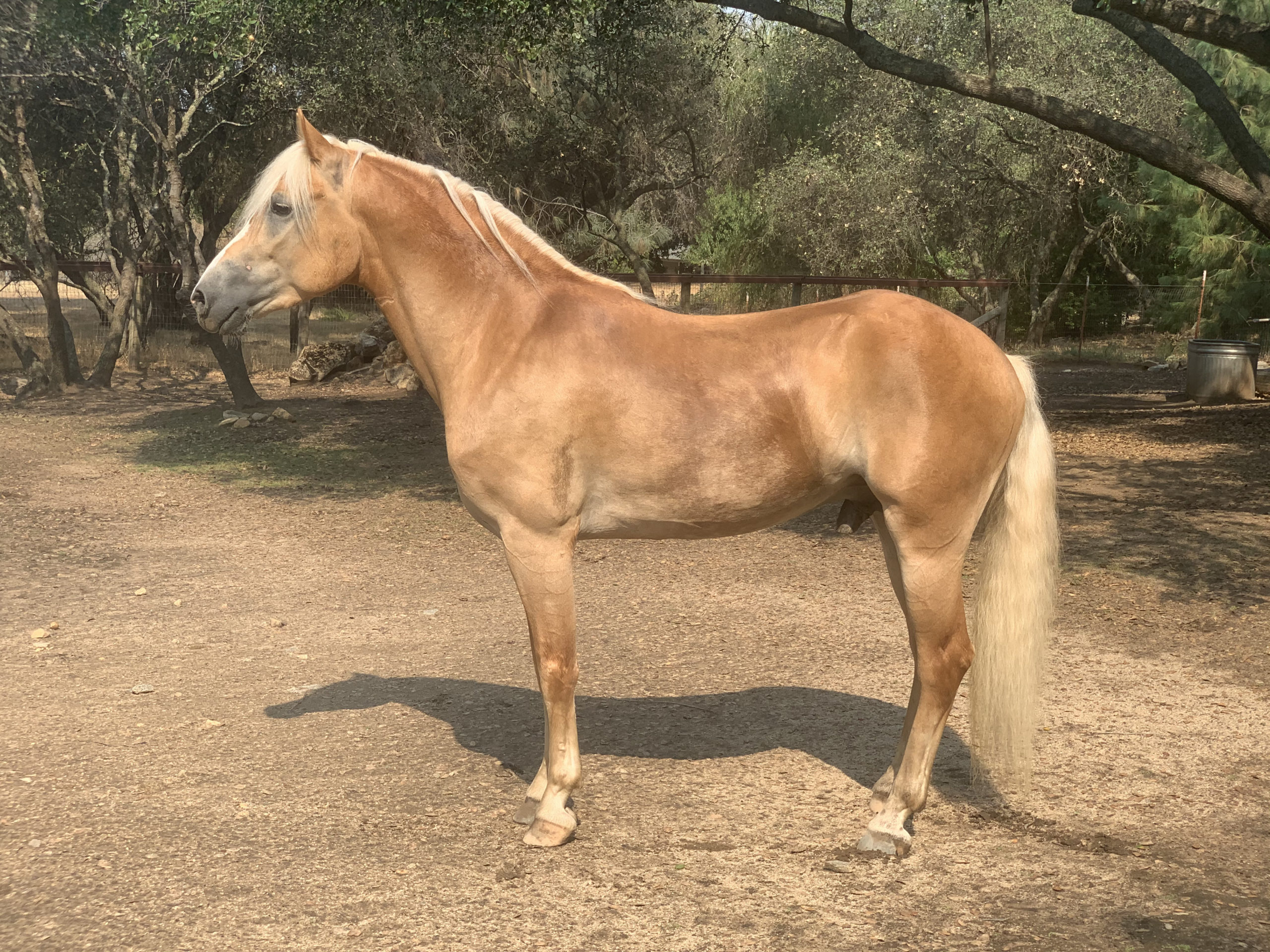

The Haflinger is an old breed of small horse that originated in the Tyrolean mountains of Austria. Originally the family farm horse of the peasants who resided in this region, the Haflinger was called-upon to perform reliably, capably, and cheerfully under harsh conditions. Whether the job was to plow steep fields, provide transportation in the worst winter storm, pack heavy loads or pull fallen trees, Haflingers did it all.
The attributes of the modern Haflinger are its beauty, disposition and versatility. Years of careful breeding have resulted in a small, sturdy, sure-footed horse that does well on minimal pasture, is hardy to cold weather and has a dependable, affectionate temperament.
The combination of these breed traits makes the Haflinger ultimately suitable for all equine disciplines–truly the all-around family horse. This breed is equally at home doing farm work or dressage, competitive trail riding, Pleasure driving and driving competitions, jumping, therapeutic riding or cattle work. The Haflinger is strong enough to be comfortable mount for adults.
The Haflinger’s chestnut coloring ranges from light blonde to dark chocolate, with thick white or flaxen mane and tail. They vary in height from 13 to 15 hands and weigh from 800 to 1300 lbs. Haflingers are well-muscled, with a powerful build, sturdy bone, and large hooves. The overall impression is of a breed of exceptional conformation and beauty, with a kind eye, an intelligent expression and bearing of great vitality and nobility.
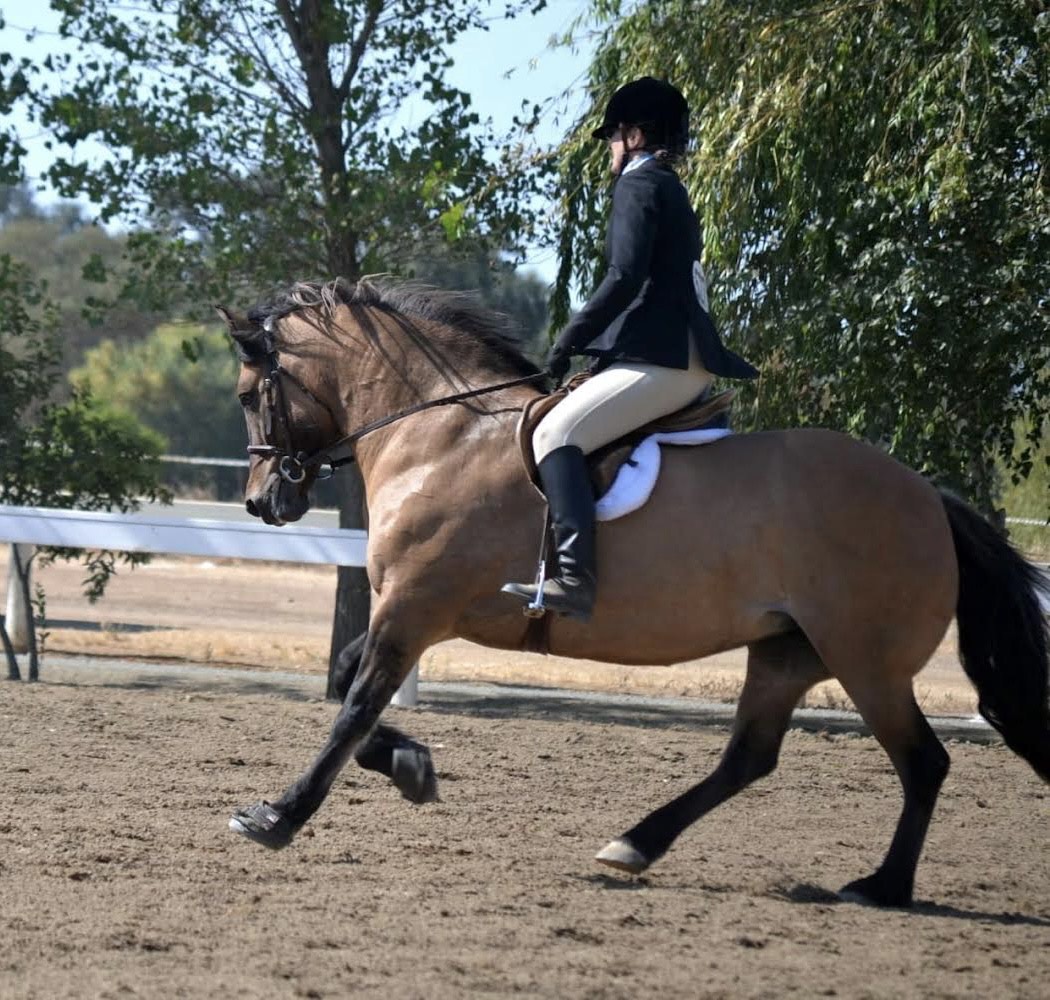

The Highland Pony is the largest of the two native pony breeds of the Scottish highlands and islands.
Two types of Highlands have developed in Scotland over the years. One, a stout, chunky more draft type was bred on the mainland, known as the garron type, and the other a lighter type, came from the islands of Islay, Rhum, Mull and Barra in the west. They are a versatile breed, willing to tackle any job.
The Highland is hardy, healthy, long-lived and economical to keep ( what we American’s call an easy keeper ). The breed is known for its strength and resilience. Even though its referred to as a pony, they carry adults. The Highland has qualities, along with its good temperament, which are vital to success in driving.


The Norwegian fjord is one of the oldest domesticated horse breeds, with pure bloodlines going back at least 4,000 years. They were the original mounts for the Vikings and later became farm draught horses. Called “fjordhest” in their native Norway, the fjord horse has one of the most iconic and unique looks amongst the horse breeds.
Approximately 90% of all fjord horses are brown dun, with a light brown body and dark brown primitive markings (dorsal stripe from forelock to tail, and zebra stripes on the legs). Most notable, they have a distinct black or dark brown stripe in the middle of a cream or white colored mane. The other 10% of fjords fall into one of the other color categories: red dun, grey dun, yellow dun, or white dun. The mane is trimmed short so the hair will stand erect, and into a crescent shape to emphasize the shape of the neck. They bear a resemblance to the Prezwalski horse, to which they may share ancestry, however are more closely related to the extinct Eurasian Tarpan horse.
Fjords generally range from 13.2-14.2 hands, but are well muscled and sturdy, and make a perfect mount for adults as well as children. Their easygoing demeanor and ease of training make them perfect for all disciplines, and you can see fjords competing in all but the highest levels of every discipline. Despite their short stocky stature, they are naturally athletic and have great endurance, which make them great mounts for trail and distance riding. They are often trained in driving as well, and often exceed in this discipline. They are easy keepers and do best on grass hay with little to no grain, and make great family mounts due to their kind and friendly temperament.


Sheki is a 2003 Thoroughbred that was foaled in Ireland and made his way here to the states. He has been a program horse for H4H for a few years and is one of our best lesson horses! He has performed at the State Fair and the Western States Expo many times! Be sure to check Sheki out in the breed demonstrations and in Scott Purdum’s demonstrations!
Hope For Horses (H4H) is a 501(c)3 non-profit organization dedicated to the rescue, rehabilitation, retraining and rehoming of Off The Track Thoroughbreds (OTTB) and other horses in need. Our mission is to prepare OTTBs for a successful second career along with taking unwanted, abused, neglected, or abandoned equines and providing them with the care needed to find a compatible and loving home. We believe that rehabilitation doesn’t stop with the horse. We are dedicated to using Equine Assisted Therapy and Learning to create opportunities for emotional, social, and behavioral growth for people of all ages and abilities.
“Transitioning from where they were to a better future – both horse and human”


The Friesian horses originated in Friesland—a province of The Netherlands (Holland). The Friesian horse, one of Europe’s oldest breeds, was originally imported to North America in the seventeenth century but the breed was totally lost in North America due to crossbreeding. The Friesians were not reintroduced to North America until 1974.
Friesian horses are very versatile and can be used in riding for pleasure, and competition. They are ridden in dressage, pleasure, western and many other classes. Friesians are amazing in front of a carriage, which can also be for pleasure and in competition and even for light farm work. They are known for their beautiful long hair and black coat, quiet temperament, and willingness to learn and work.
There are currently more than 45,000 Friesians registered worldwide and approximately 8,000 of those horses are in North America.
A judging or Keuring, in Dutch, is an evaluation of horses here in North America, by officials from the Netherlands. Once a year, teams of officials qualified by the Friesch Paarden Stamboek are sent to North America to inspect or “judge” our horses. This is a thorough evaluation process that helps us to upgrade our breeding programs. The horses are judged in-hand and 60% of the evaluation is based on the quality of movement and 40% is based on conformation.
Please join us for our annual Keuring and Mare Show November 10-11, 2023, here at Murieta Equestrian Center.


The Gypsy Horse, also known as a Gypsy Vanner or Gypsy Cob, originates from the UK and Ireland. They have the appearance of a small draft type, standing generally between 13 and 16 hands in height and characterized by a “sweet” head, well-muscled, powerful build, a well-rounded hip that is commonly referred to as a “Apple Butt”, abundant mane and tail and long hair/feather on the lower legs. They possess an incredibly gentle and willing temperament making them the ideal choice for many youth and amateur riders. Gypsy horses are commonly known for their eye catching black and white tobiano coloring but they also come in a variety of colors and patterns such as appaloosa, buckskin and blue roan. They are descended from a combination of Shires, Clydesdales, Friesians, Fell and Dales Ponies with their origins in the Romany gypsy community of the UK and Ireland. These horses were originally bred by the Romany people to pull their wagons or “caravans” known as Vardos. Today, the Gypsy Horse is excelling in nearly all riding disciplines as well as driving.
June 7-9, 2024
Friday June 7th 9:00 AM – 6: 00 PM
Saturday June 8th 9:00 AM – 6:00 PM
Sunday June 9th 9:00 AM – 5:00 PM
(916) 354-2119
[email protected]
Murieta Equestrian Center
7200 Lone Pine Drive,
Rancho Murieta, CA, 95683
We love dogs, but we ask that you please leave your pups home while attending the Horse Expo. Thanks!
Photos courtesy of Kathy Higgens, Fuentes, Hill Shepard, Charles Hilton, Kala Johnson, Jessi Hogan, Tyson Rininger, Traci Nelson, Lisa Reese, and Constance Birdsong Photos.